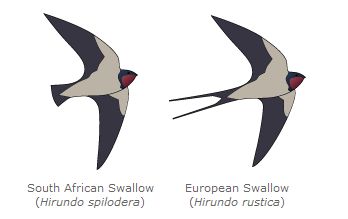BigBadLou
Final Approach
- Joined
- Aug 6, 2014
- Messages
- 5,166
- Location
- TX - the friendliest state
- Display Name
Display name:
Lou
If you feel like it, here is an interesting and fun math riddle about a propeller on a GA aircraft.
(if you don't like math, propellers, airplanes or have a negative attitude, feel free to vent your thoughts elsewhere, thanks)
Let's say:
- a bird happens to be in the path of an engine - and let's say the plane is a twin (so that there is more room around the engine and the bird has a better chance of escaping)
- the bird's altitude is above the engine cowling
Do you have a mental picture of the bird trying to fly right over the engine cowling but through the propeller circle?
Some numbers:
- the 2-blade propeller spins at 2400 RPM and the aircraft travels at 156 knots GS
- the bird is 1 ft big (for simplification) - such as 1ft wingspan and 1ft length
Now the interesting question is: into how many chunks would the propeller cut the bird up should they airplane continue on its path?
This question came to me one day while I was watching a video of a bird strike on a Baron. I came to thinking: if it had been a single, would a prop on the nose have helped "chunk up" the poor fella so that it would pose less risk of breaking the windshield and incapacitating the pilot or passengers?
I am posting this riddle knowingly in the Pilot Training section because
a) I didn't find a better section for aviation math
b) I think every pilot, including students, should know what path the propeller takes through the air
Disclaimer: no animals were hurt during me thinking of this riddle.
(if you don't like math, propellers, airplanes or have a negative attitude, feel free to vent your thoughts elsewhere, thanks)
Let's say:
- a bird happens to be in the path of an engine - and let's say the plane is a twin (so that there is more room around the engine and the bird has a better chance of escaping)
- the bird's altitude is above the engine cowling
Do you have a mental picture of the bird trying to fly right over the engine cowling but through the propeller circle?
Some numbers:
- the 2-blade propeller spins at 2400 RPM and the aircraft travels at 156 knots GS
- the bird is 1 ft big (for simplification) - such as 1ft wingspan and 1ft length
Now the interesting question is: into how many chunks would the propeller cut the bird up should they airplane continue on its path?
This question came to me one day while I was watching a video of a bird strike on a Baron. I came to thinking: if it had been a single, would a prop on the nose have helped "chunk up" the poor fella so that it would pose less risk of breaking the windshield and incapacitating the pilot or passengers?
I am posting this riddle knowingly in the Pilot Training section because
a) I didn't find a better section for aviation math
b) I think every pilot, including students, should know what path the propeller takes through the air
Disclaimer: no animals were hurt during me thinking of this riddle.



